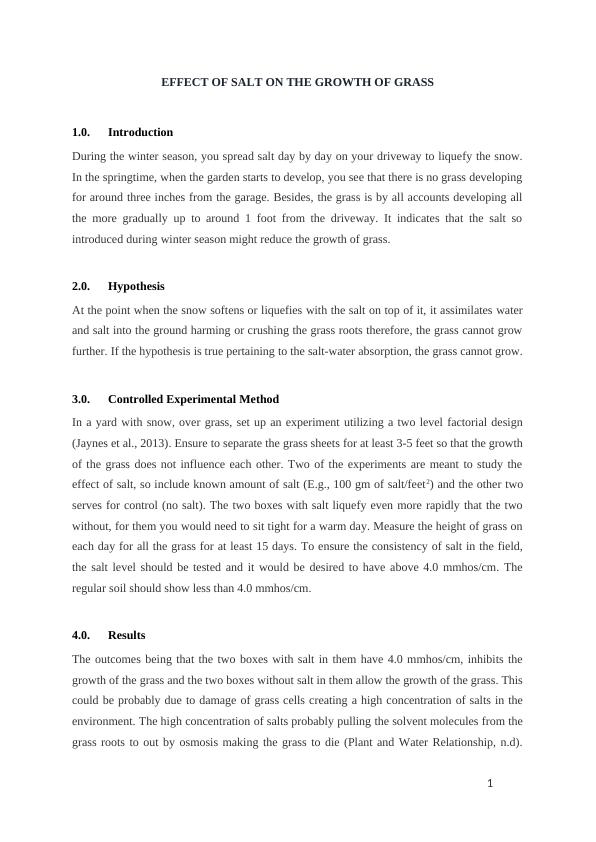Ask a question from expert
Effect of Salt on Grass Growth - Desklib
2 Pages604 Words300 Views
Added on 2019-09-19
About This Document
This article discusses the effect of salt on the growth of grass. It includes a hypothesis, controlled experimental method, results, and conclusions. The study suggests that salt inhibits the growth of grass by damaging the grass cells and creating a high concentration of salts in the environment.
Effect of Salt on Grass Growth - Desklib
Added on 2019-09-19
BookmarkShareRelated Documents
End of preview
Want to access all the pages? Upload your documents or become a member.
